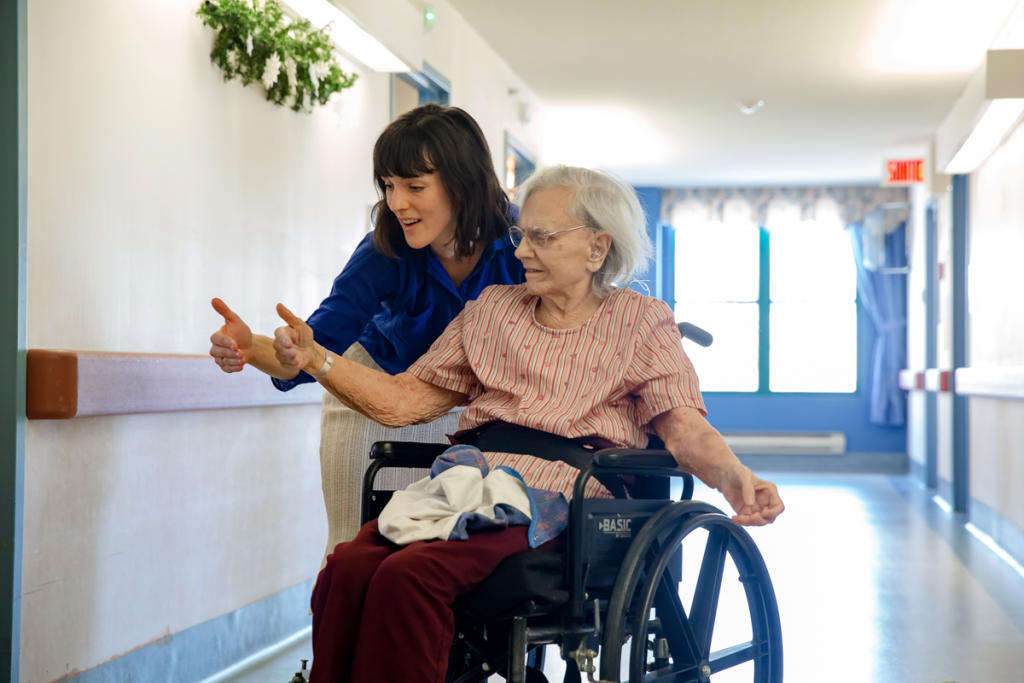This post is also available in Dutch.
Clapping hands, moving feet, head-rocking… Any of these spontaneous rhythmic responses that we all execute without thinking are already a form of dance. According to the International Laboratory for Brain, Music, and Sound Research (in Montreal, Canada), dance can be defined as the movement of one or more bodies in a choreographed or improvised manner with or without accompanying sound.
In a project called “Mouvement de passage”*, dancers and researchers worked together to investigate how dance can facilitate social interactions. This project was especially aimed to foster relationships for people developing dementia and who thus encounter communication difficulties. Two dancers and a musician repeatedly visited 8 persons suffering from dementia in group sessions. During these visits, dancers and residents interacted through music and dance with various exercises in solos, duos or groups. All sessions were video-recorded and later analyzed by experts to determine the nature of the interactions. By measuring the number and directions of the interaction, they defined distinct types of connections. Several criteria were considered such as: Who initiated the action? Who responded to it? Who preferred not to respond and just wanted to dance?”. Everybody engaged in the session, however, while most residents connected with one/several person(s) (either reciprocally or non-reciprocally), a few introverted individuals were mainly tuned to the music and the dance practice.
Expectedly, most of the interpersonal interactions were initiated by the professional dancers. Nonetheless, over the course of the program, residents showed a strong increase in the number of interpersonal interactions they engaged in, especially reciprocal ones. This new sign of commitment, throughout the sessions, was highly surprising as most residents declared they had never met these dancers before . Importantly, more than simply reproducing dancers’ moves, the exercise showed that people could improvise and develop their own body language.
Building on these behavioral results, researchers wondered if they could physiologically measure mental and emotional states during interpersonal interactions. Therefore, they chose to investigate the activity of the sympathetic nervous system that manages strong emotions and stress by placing wearable electrodes on participants’ fingertips or palms around the sweat glands. This type of sensor measures how much skin conducts electricity (how much sweat, basically). Changes in this sweat response can be related to changes in emotional or mental states. Subsequently they measured the synchrony in sweat response between participating subjects. By comparing these measurements with the video footage they could show they can accurately determine both the type and timing of interaction that took place, based on the physiological synchrony alone.
Approaching social interaction through dance seems particularly adapted to embody and express one’s internal states. Obviously, reading body language cannot be limited to quantifying how much people sweat. However, this study provides a first tool towards being able to read the internal twists and turns of the body during social interaction. Physical interaction is an important aspect of communication. In fact, it can become the main form of communication for people who suffer from mental disorders and/or struggle with verbal communication. Therefore, interpreting behavioral and physiological responses during social interaction indicates a promising communication interface to be developed in future extensions of the project. Stay tuned.
*“Mouvement de passage” is a movement program created by Ariane Boulet (choreograph, dancer) and Je suis Julio (production company).
Author: Kim Beneyton
Buddy: Martina Arenella
Editor: Christienne Damatac
Translation: Floortje Bouwkamp
Editor translation: Marlijn ter Bekke
